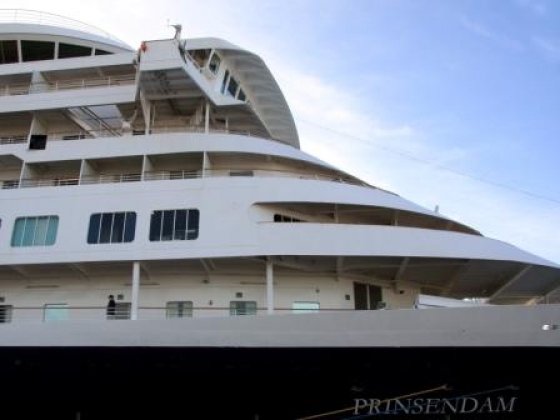If Manaus, as was mentioned, covers about 4000 square miles, than “Manaus & Surroundings” is obviously too ambitious a title for one local excursion. It was just that though: a boat and canoe trip to, and in, Lake January. The latter owes its name to the fact that between February and October, there is no lake any more, compliments of the seasonally rising waters of the Solimoes. That, by the way, is the name of the Amazon River before it meets with the Rio Negro. In May the entire forest between Solimoes and Negro is flooded. The confluence consequently moves many miles westward and the Amazon’s width increases to more than 25 miles.
 Since I am not an ornithologist, there is not much that I can tell about the many birds of the Amazon. The lake itself was, in essence, a bird’s paradise where flowers and caymen (alligators) were only a fixture in the surrounding stage. On that same stage one couldn’t miss the “floating houses”: at first sight rather unattractive homes for their Indian inhabitants. The good news is that the Brazilian government doesn’t levy any estate tax as long as the house never really is attached to the land. It seems like an excellent ordinance to benefit poor people. Because changing a domicile on a daily basis is rather cumbersome, the question arises how to arrange to stay and live at the same address? Answer: you find a tree around which you fix a rope that also secures your “home float”. Make sure you don’t get into trouble with the neighbors though, because they might cut you loose!
Since I am not an ornithologist, there is not much that I can tell about the many birds of the Amazon. The lake itself was, in essence, a bird’s paradise where flowers and caymen (alligators) were only a fixture in the surrounding stage. On that same stage one couldn’t miss the “floating houses”: at first sight rather unattractive homes for their Indian inhabitants. The good news is that the Brazilian government doesn’t levy any estate tax as long as the house never really is attached to the land. It seems like an excellent ordinance to benefit poor people. Because changing a domicile on a daily basis is rather cumbersome, the question arises how to arrange to stay and live at the same address? Answer: you find a tree around which you fix a rope that also secures your “home float”. Make sure you don’t get into trouble with the neighbors though, because they might cut you loose!
That is the story of my second Monday on board. Let’s go to Carnival!!
Prinsendam, Day 13 – Monday Jan17th, 2011
With a 3kt push in the back on our way to the ocean (4 days away)
P.S. Let me also share a few tips from our Indian guide for future visitors. It provides important information about certain fish!
1)Don’t be afraid of piranhas. As long as you have no open wound, you can swim “your heart out” in waters where piranhas will just be colleagues. Let it be known though that one little cut – a small trace of blood – sets them aflame and makes them attack immediately. At that moment it helps (somewhat) if you know which ones of the 23 species of piranha are to be taken extremely seriously. There are three ferocious types: “confrontation to be avoided” by all means: run, jump, fly or swim (less recommended but better than to freeze).
a) the red bellied piranha, because he bites with very, very high frequency
b) the black bellied piranha, because he is very big (20 inches) en take big bites
c) the “cachoe” (catch-you) because they swim in large schools, capish?
2)The Indians don’t fear piranhas. They fear electric eels and stingrays, although these killers swim in deep waters, at the bottom. Their biggest concern is the “canjiriu” (Kanji-ree-oe). These are little creatures that love shallow waters and swim close to the surface. Measuring about 2 inches, they actually nestle within the body, and have two fangs that allow them to block the way back. Once inside, they then eat their way forward. Swimmers find them at times in ears or nose, sometimes in their mouth if they open it inadvertently (not smart under any circumstances anyway!) Why are fishermen afraid of these killer fish? Simply because, when they get out of their boats if their nets are ensnared or if the propeller has caught grass or gets stuck in other debris, danger lurks in the murky waters. What hole do you think the canjiriu seek out to penetrate? One guess allowed! The only remedy is quick surgery, otherwise death is a certainty! By the way: they are very fond of urine. Whatever you do, don’t p….!!


Tu blog es una excelente ensalada hecha con Geografia, Zoologia, Sociologia y Costumbrismo. Quizas hecho de menos un poco de Gastronomia, en alguien como tu, tan aficionado a la buena mesa.
I observe similarities with “Heart of Darkness” by J. Conrad. Love the picture of the boat…must be the “pinsjesdam”.